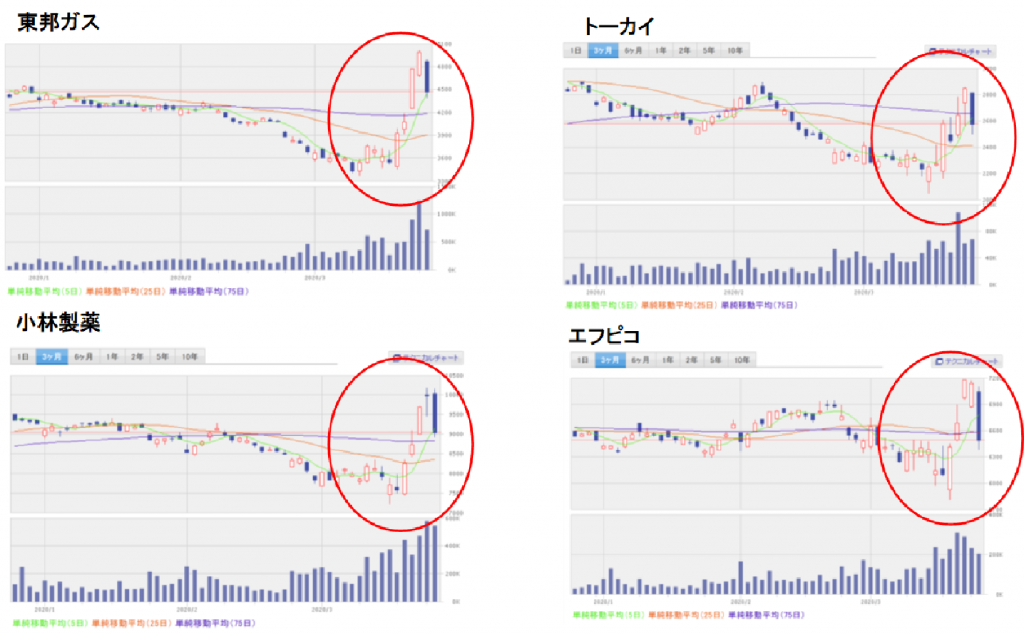《株式急回復》リーマンショックとの違い、セカンド・シナリオは必要か?/《Sudden Equity recovery》The difference from 2008 Financial shock, is second scenario necessary?
グローバルに株式市場が急回復、ドル高傾向が先導か?
株式市場の急回復が始まった。3/20(金)のNYダウは依然として弱い地合いを引き継ぎ前日比△582.05と大きく下落したものの、翌営業日の3/23(月)の東京市場では日経平均が逆に334.95ポイントの逆行高となり、さらに火曜には1,204.57ポイントの急騰、それを受けて同日夜のNYダウは2,112.98ポイント高と史上最大の上げ幅を見せた。いくら米国の経済緊急政策に期待が高まったとは言え、新型コロナへの懸念が世界中で深刻化するなかでの、この株高に驚いた向きが多いのではないだろうか。
Global equity markets started to recover, Stronger US$ is leading it?
Equity markets started recovering worldwide. In spite of 582.05 points drop of NY Dow Index on 20. March, Nikkei Average showed 334.95 points rise at Tokyo on 23. March, next operating date. Moreover it recorded 1,204.57 points surge on Tuesday, and NY Dow turned into 2,112.98 points rise, the biggest increase ever, at that night. People might have been surprised at this bull sentiment, though they expect the urgent economic package in the US.
(English text continues to the latter half of the page)
ドル高傾向が先導する株高
-1024x622.png)
直近1ヶ月のチャートを観ると、かなり明確にドル高傾向が株式相場の先導役になっていることが感じられる。NY株の急落と共に一時は101円台に急落したドルは直近で112円台までその水準を戻しており、特に3/23(月)にはFRBが追加利下げを行ったにも関わらず111円台のドル高水準を固めた。3/24(火)の東京株式市場ではこの円安ドル高を好感して急騰に転じたわけだが、これは輸出企業への好条件と言った目先の材料ではなく、これまでの株高を支えてきた「ドルを中心とした流動性拡大の構造」が再び帰ってきたことを評価したものではなかっただろうか。新型コロナの世界的パンデミックを契機とした株式市場の暴落だったが、その裏ではドル急落と株暴落が軌を一とし、そしてドルの回復とともに株の見直しが始まった。
ひょっとしたらこれがリーマンショック(2008)との最大の違いになるかもしれない。当時はその直前までアメリカを中心に極端な金余り状態が続いており、それがアメリカの不動産、資本市場に流れ込んで相場の高騰を招いていた。リーマンショックはその流動性拡大の構図が一気に逆転したことで、世界中の資本市場の暴落とその後の長い不況を招いた。ところが今回はヒト・モノの移動が止まり、実体経済への深刻な影響が懸念されているが今のところカネの流れは滞っていない。まだ軽々しく断定はできないものの、これまでリーマンショックを遥かに上回ると思われていた今回の暴落は、リーマンショックとは少し性質を異にするものになる可能性もある。
東京株式市場では循環物色の動きも
下の図は3/24(火)の東京株式市場における値下り率上位4銘柄のチャートを並べたもの。先週半ばからの動きが4銘柄ともピタリと同じパターンに納まっている。見る人が見ればわかるはず。これは相場急落の中でも、市場の中で「循環物色」の試行錯誤が行われている証拠だ。
3/24(火)値下がり上位がいずれも同じ値動きに

相場が急落する中でも先週から買われていた銘柄群は、いずれも相場全体が急回復するなかで一斉に売り戻された。ここからは指数全体の戻しに連れて大型優良株の戻しが大きくなるだろう。実はすでに先々週くらいから、業績実態に比して下落の大きい銘柄をセレクティブに買い進める動きが散在していた。下落と悲観一色と思われていた市場の中に、循環物色の試行錯誤が継続していた。自分の記憶にある限り、これもリーマンショック時との大きな違いだ。
市場はまだ歴史的な混乱の中にあり、結論を出すには早過ぎる。市場の中ではまだ短期的な戻しの後に二番底が来るという見方が支配的だ。ただ警戒心は解かないまでも、セカンド・シナリオは頭の片隅に置いておくべきかもしれない。
Global equity markets started to recover, Stronger US$ is leading it?
Equity markets started recovering worldwide. In spite of 582.05 points drop of NY Dow Index on 20. March, Nikkei Average showed 334.95 points rise at Tokyo on 23. March, next operating date. Moreover it recorded 1,204.57 points surge on Tuesday, and NY Dow turned into 2,112.98 points rise, the biggest increase ever, at that night. People might have been surprised at this bull sentiment, though they expect the urgent economic package in the US.
Stronger US$ leads Equity markets’ recovery
-1024x622.png)
Looking over latest 1 month chart, I feel clear correlation between stronger US$ and markets’ recovery. After US$ had dived into JPY101 level along with NY stock market crash, it has recovered to JPY112 level. Especially it showed strength of JPY111 level on 23. March in spite of FRB’s financial easing on the same day and it has lead to strong surge of Tokyo stock market on 24. March. This is not temporally material like favorable effect to exporting firms, but is the evaluation of the fact that US$ based excess liquidity structure is back. Although the global market crash was triggered by Covid-19, devaluation of US$ and stock markets decline were going on simultaneously behind it. And stock markets started recovery along with revaluation of US$.
This could be the main difference from 2008 Financial Crisis. At that time global risk money was concentrated into US which invited extreme excess liquidity for long time. The extreme capital produced market heats in stock markets and real estate markets. Then the structure started unwinding suddenly and markets crashed all over the world which lead to long time serious recession. This time transports of human and goods have stopped which might turn into deep negative impact on real economy, but capital circulation is still working. It is too early to decide yet, but this market crash which had been considered to be much more serious might be something different from the 2008 Financial Crisis.
Circulatory selective buying at Tokyo market
The below is charts of 4 biggest decline on 24. March. Just a glance tells you that all stocks fell into the same pattern. This tendency indicates the existence of circulatory selective buying attempt.
24.March: 4 biggest declines fell into same pattern
-1024x630.png)
The group of stocks which had been bought in downfall of the market were all sold again as the market as a whole was bought back. The group of large and blue chips will be bought back if market recovers further. Since 2 weeks ago selective buying were going on among stocks which had sharply fallen down more than their fundamentals. The most of market participants might have thought the latest situation is nothing but negative only. However movements of selective buying were going on under the surface. As far as I remember, this is also the essential difference from the 2008 Financial Crisis.
The market is still in the confusion and it is too early to reach the conclusion. It is still dominant view to see potential of double dip. We should stay cautious but we can put the second scenario somewhere in our thought.
